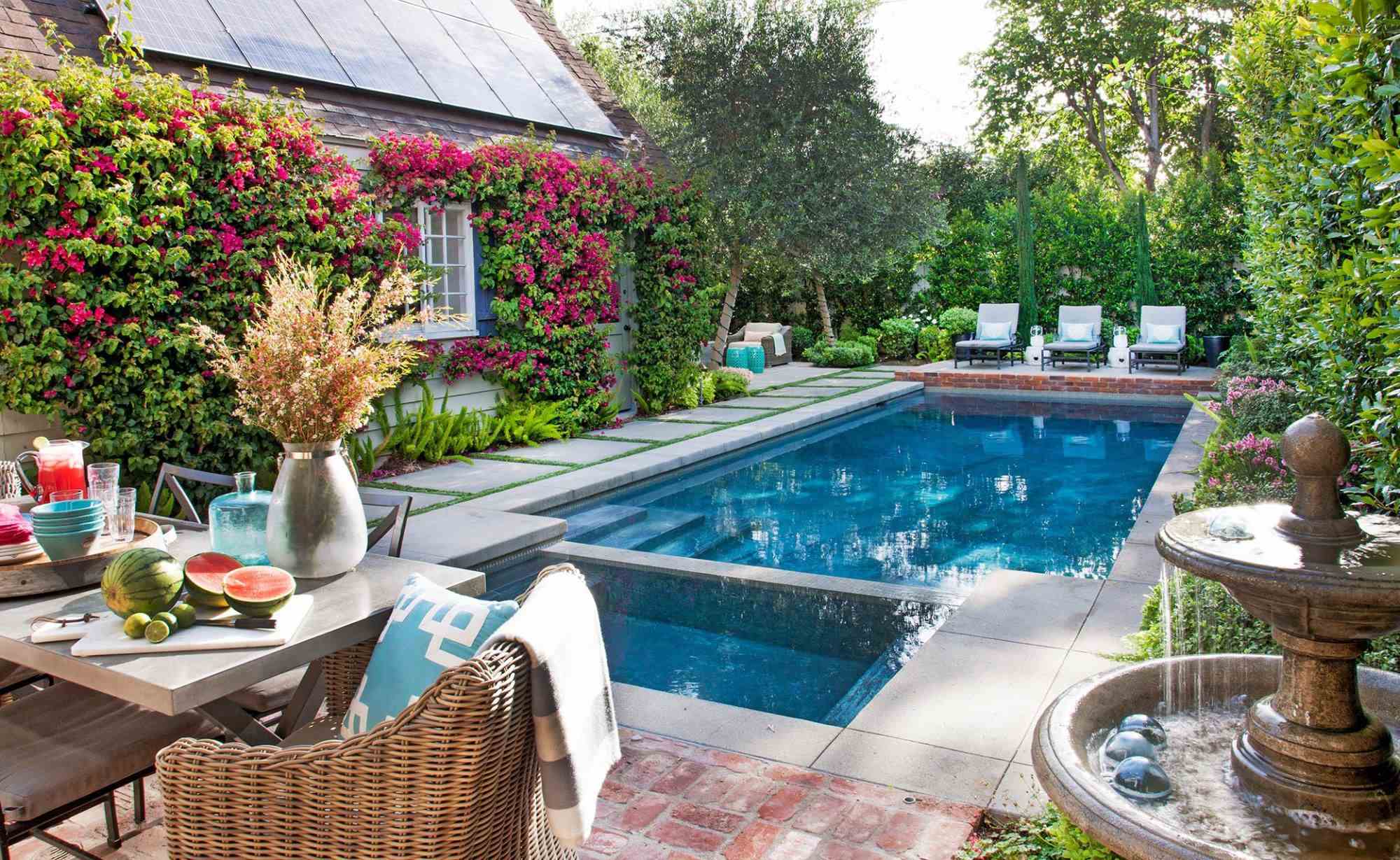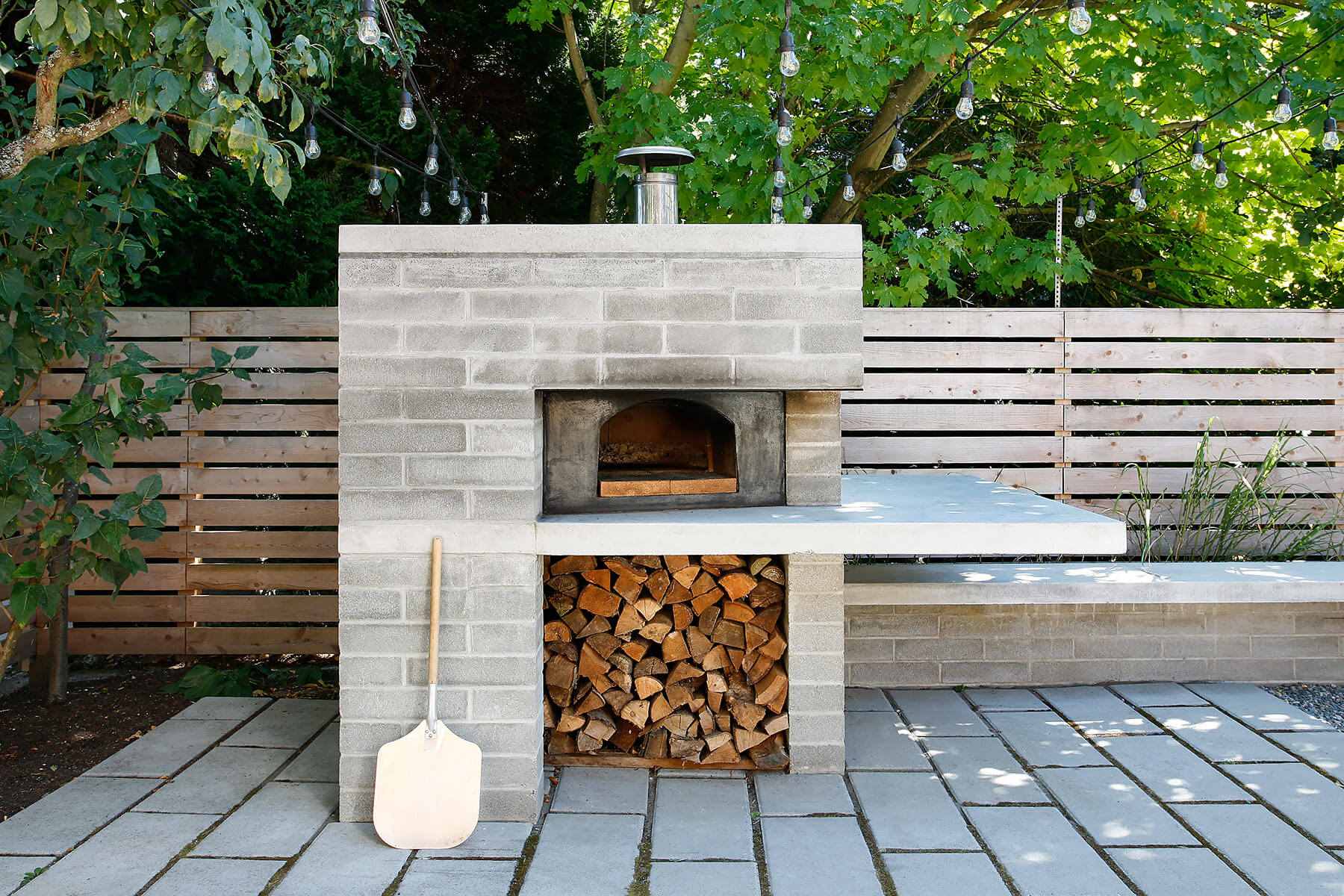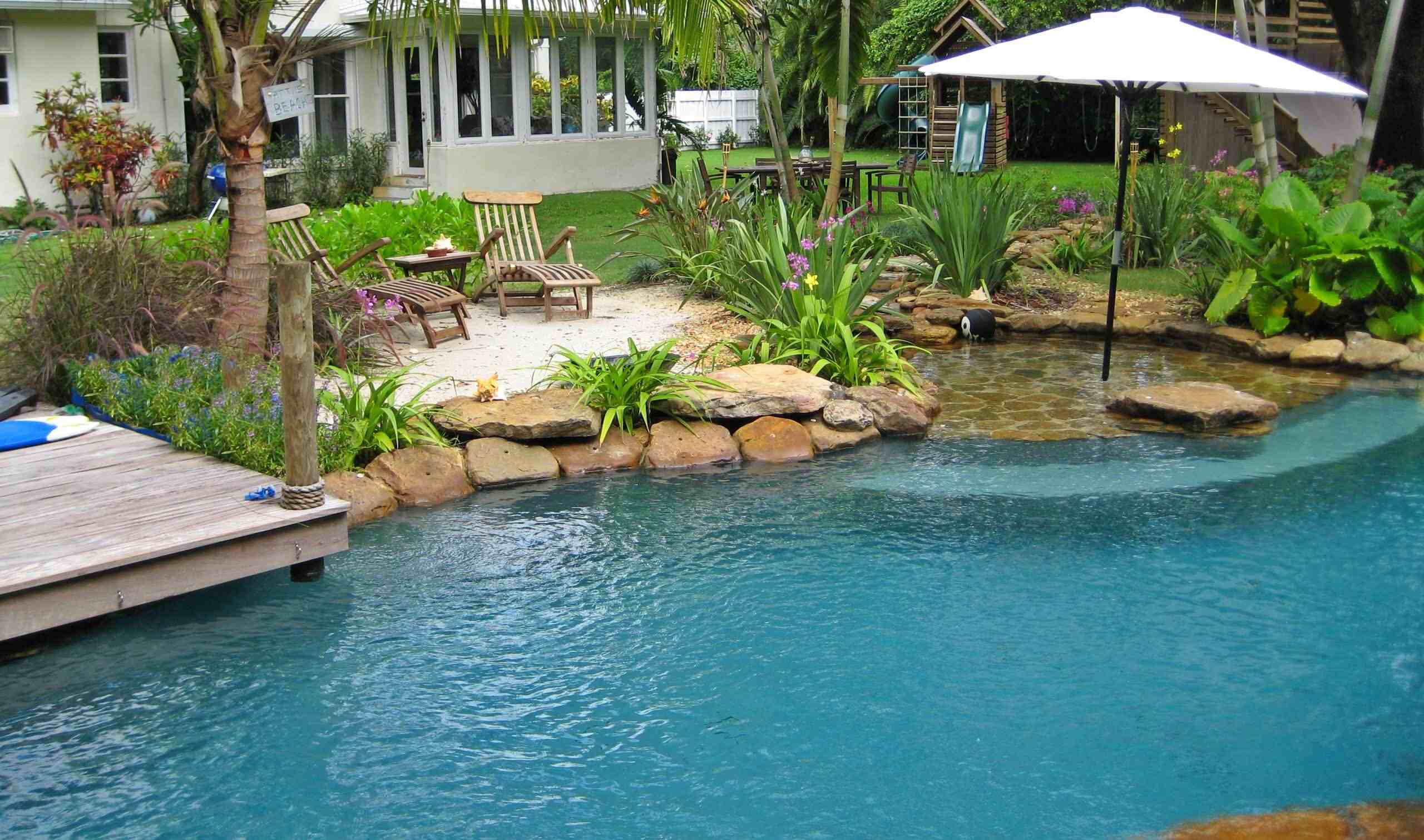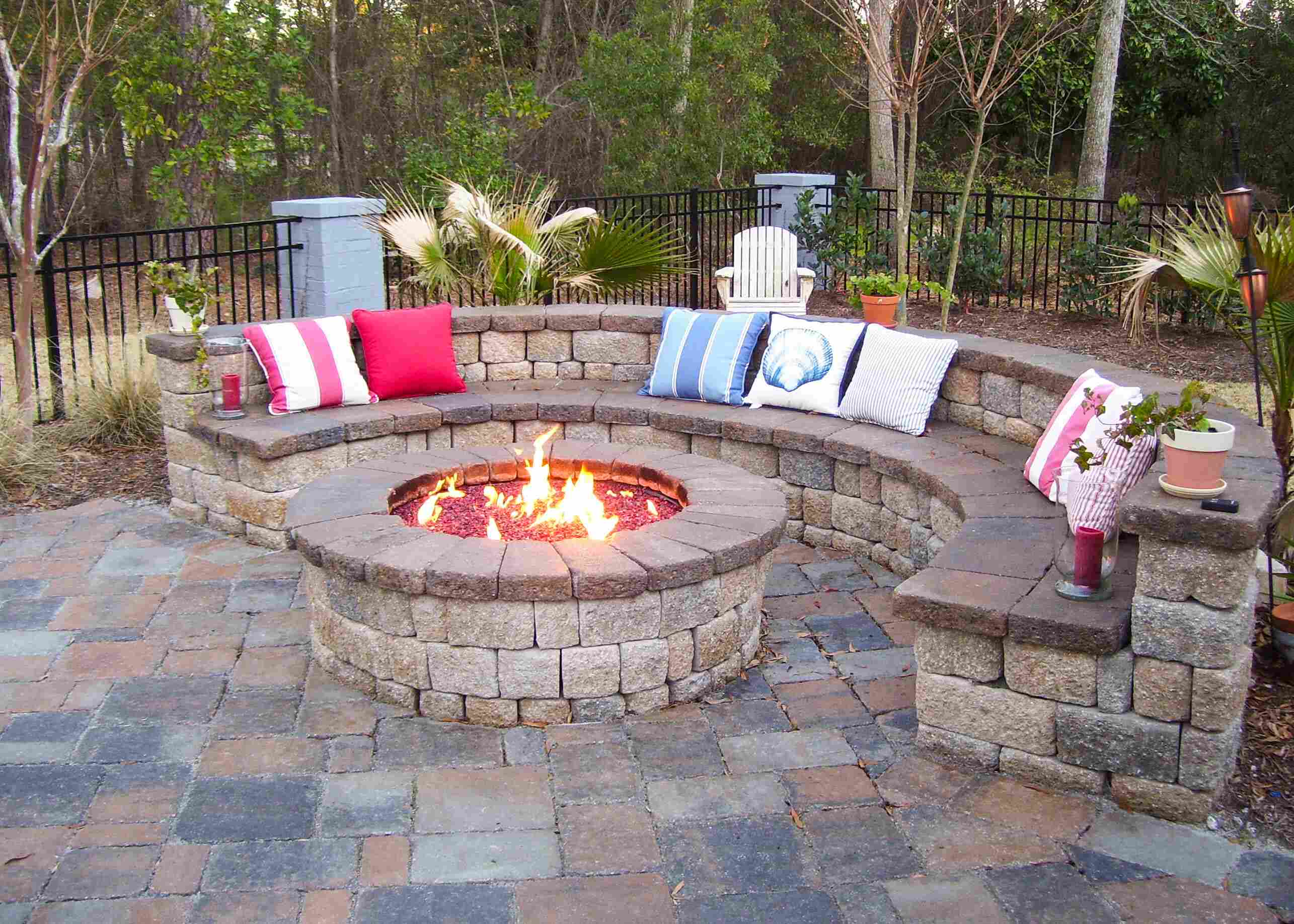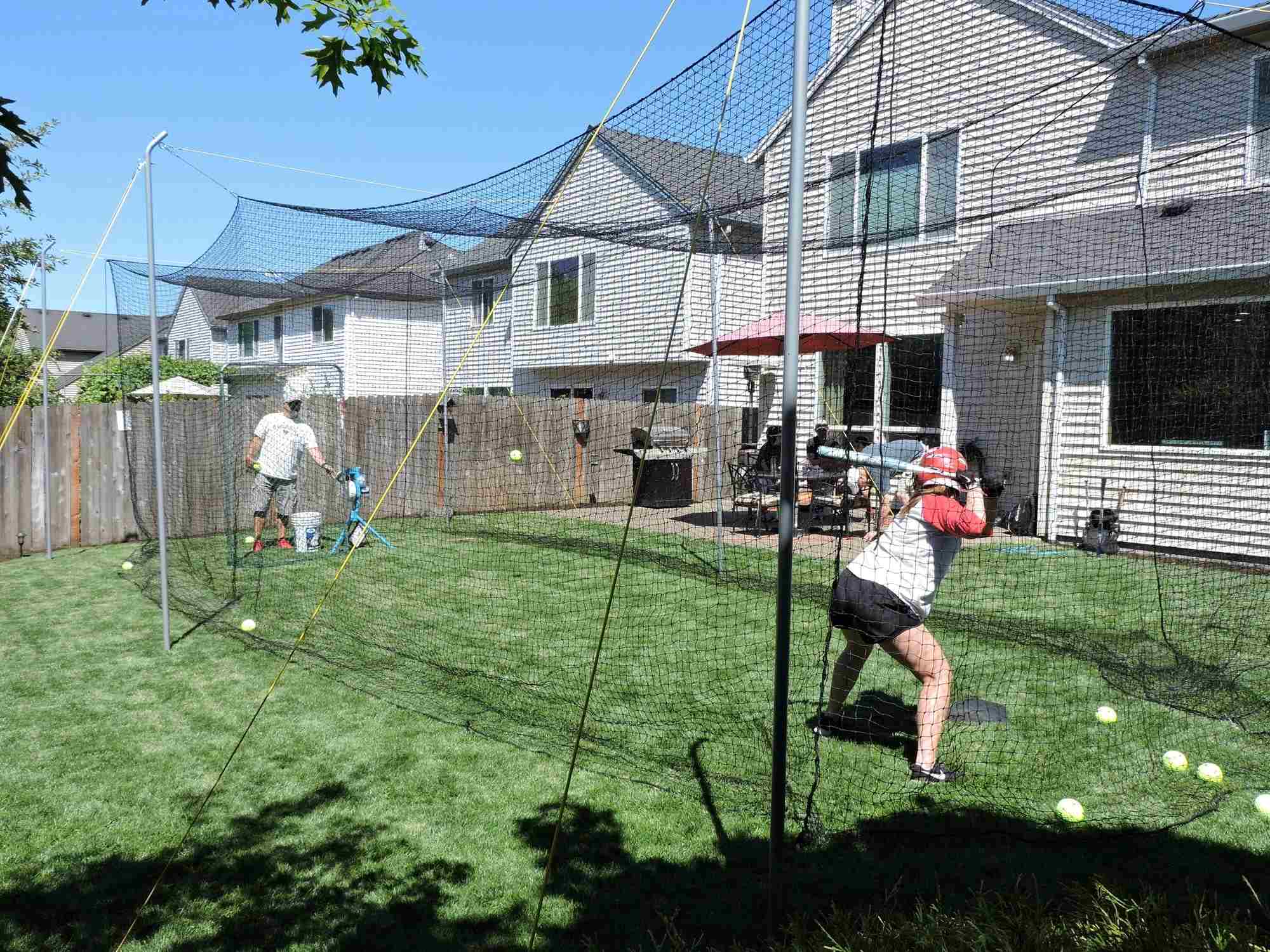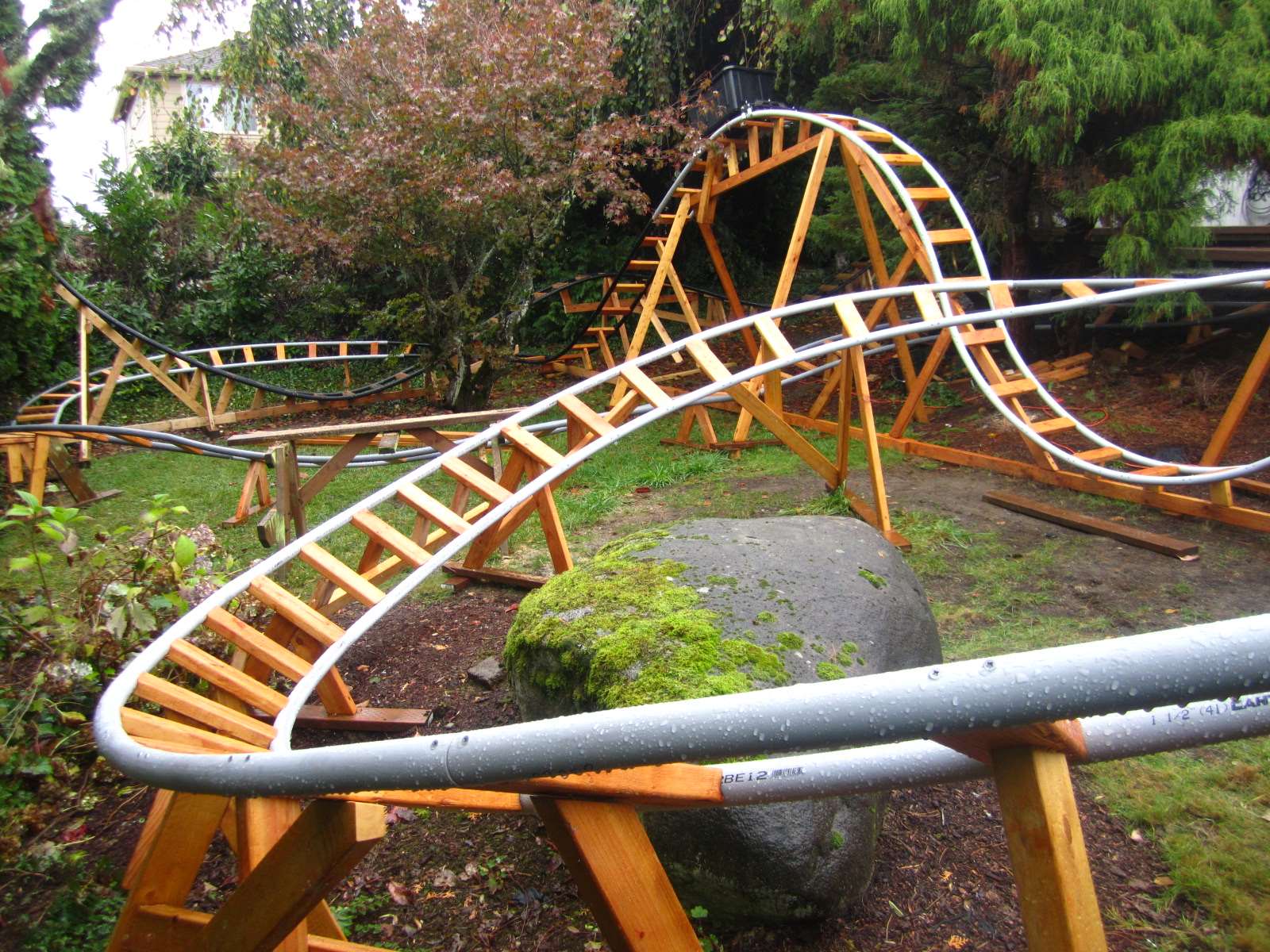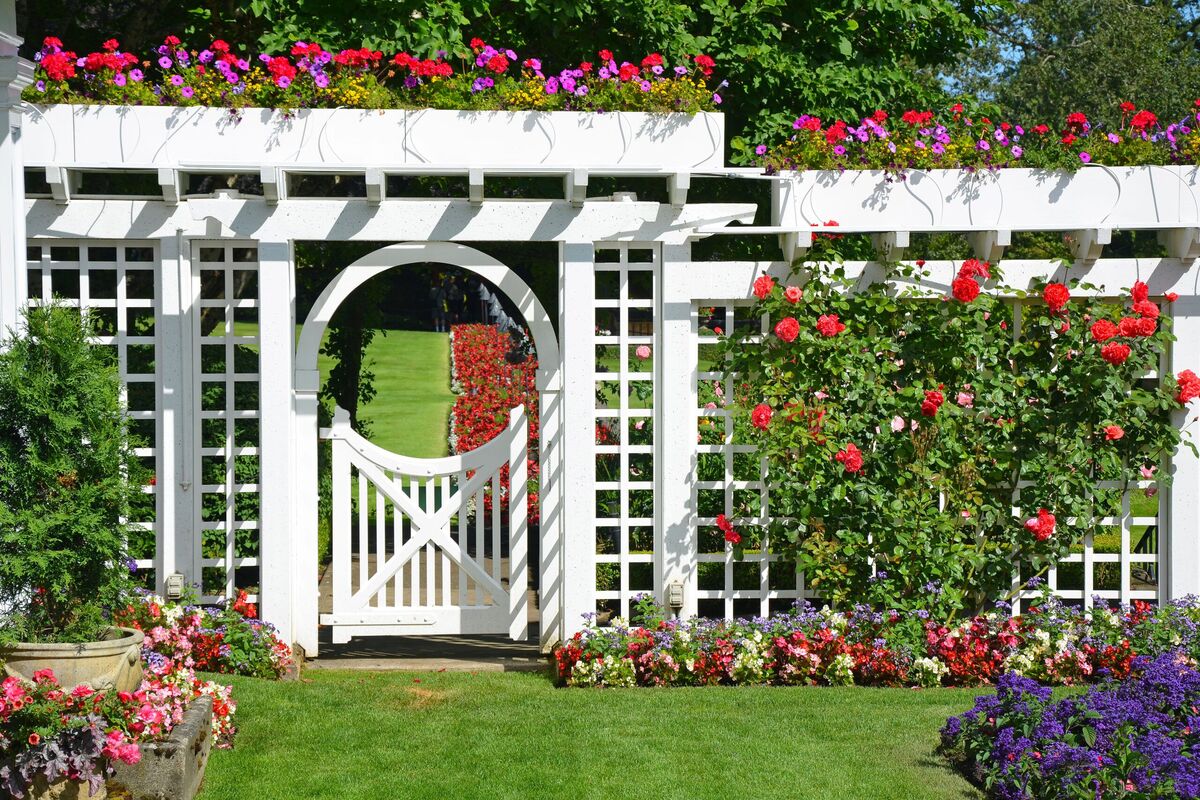Home>Gardening Techniques>DIY Projects>How To Build A Shooting Range In The Backyard
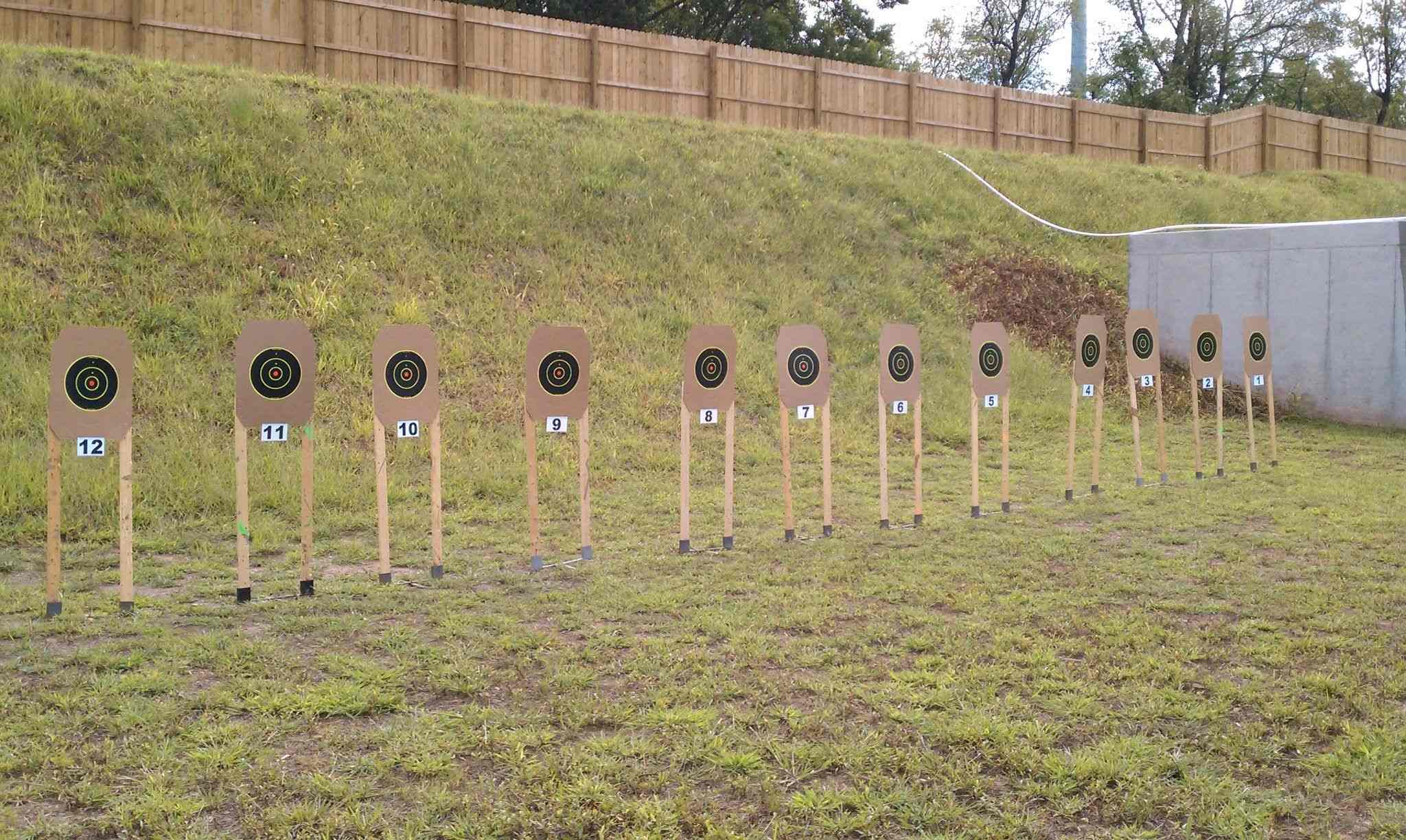

DIY Projects
How To Build A Shooting Range In The Backyard
Published: August 5, 2023
Learn how to create your own shooting range in your backyard with this comprehensive guide on DIY projects.
(Many of the links in this article redirect to a specific reviewed product. Your purchase of these products through affiliate links helps to generate commission for Chicagolandgardening.com, at no extra cost. Learn more)
Table of Contents
Introduction
Welcome to the exciting world of backyard shooting ranges! If you are a DIY enthusiast and have a passion for firearms, building your own shooting range in your backyard can be a rewarding and fulfilling project. Not only will it provide you with a convenient and private space to practice your shooting skills, but it can also be a great way to bond with family and friends who share the same interest.
Building a shooting range in your backyard requires careful planning, consideration of legal requirements, and implementation of safety measures. It’s important to understand that building a shooting range is a significant undertaking that should not be taken lightly. This article will guide you through the various steps involved in creating a safe and functional shooting range in your own backyard.
Before getting started, it’s crucial to familiarize yourself with the local laws, regulations, and zoning restrictions that govern the construction and operation of shooting ranges. These vary from state to state and even within municipalities, so it’s important to do your research and comply with all applicable laws and regulations. Failure to do so can result in fines, legal troubles, and potential damage to your property or surrounding areas.
Safety is paramount when it comes to shooting ranges, and your backyard range should adhere to strict safety standards. This includes having proper backstops, bullet traps, and adequate barriers to prevent any bullets from escaping the range and causing harm. Additionally, clear communication and understanding of safety protocols with anyone using the range is crucial to ensure a safe shooting environment.
Choosing the right location for your shooting range is another important consideration. You’ll need ample space to accommodate the shooting range, backstops, shooting stalls, and other necessary equipment. The location should also provide a natural and safe environment that minimizes the risk of accidents and disturbance to neighbors.
As you delve into the process of designing and constructing your backyard shooting range, you’ll need to consider factors such as noise reduction, lighting options, target systems, ventilation, and upkeep. Each of these aspects plays a crucial role in creating a practical and enjoyable shooting experience.
Legal Considerations
Before embarking on the journey of building a shooting range in your backyard, it is essential to understand and comply with the legal requirements in your area. Shooting range regulations can vary significantly, so don’t assume that what applies in one location will be the same in another. Here are some key legal considerations to keep in mind:
- Check local laws and regulations: Research and familiarize yourself with the laws and regulations related to shooting ranges in your city, county, and state. This includes zoning, noise levels, safety standards, and any required permits or licenses.
- Safe distance from neighboring properties: Ensure that your shooting range is located at a safe distance from neighboring properties. This helps prevent any potential harm to others and minimizes noise disturbances.
- Noise restrictions: Noise is often a concern for shooting ranges, especially in residential areas. Check if there are any noise restrictions or regulations in place that you need to adhere to. You may need to implement noise mitigation measures such as sound barriers or sound-absorbing materials.
- Environmental regulations: Consider the environmental impact of your shooting range. For instance, if you plan to build an outdoor range, there may be regulations regarding lead contamination from spent bullets. Take steps to mitigate environmental risks and comply with any applicable regulations.
- Liability and insurance: Shooting ranges can carry inherent risks, so it is important to have proper liability insurance coverage. Consult with an insurance provider to ensure you have the necessary coverage to protect yourself and your property.
- Safety protocols and signage: Implement clear and visible safety protocols and signage at your shooting range. This includes rules and regulations, emergency procedures, and appropriate safety warnings. Educate and enforce these rules with anyone who uses the range.
Remember, it is your responsibility to be aware of and comply with all local laws and regulations. Consult with local authorities or legal professionals to ensure you are in full compliance throughout the process of building and operating your backyard shooting range.
Safety Measures
When it comes to building a shooting range in your backyard, safety should be your top priority. It is crucial to implement adequate safety measures to prevent accidents and ensure a secure shooting environment. Here are some essential safety measures to consider:
- Proper backstops and bullet traps: Install proper backstops and bullet traps to safely capture and contain bullets. This helps prevent projectiles from traveling beyond the shooting range and causing harm.
- Barriers and fencing: Use sturdy barriers and fencing to create a secure perimeter around your shooting range. This helps prevent unauthorized access and keeps bystanders or animals from entering the shooting area.
- Safe shooting positions: Designate safe shooting positions or stalls where shooters can stand or sit while aiming and firing. These positions should provide proper support, stability, and protection.
- Clear range commands and communication: Establish clear range commands and ensure proper communication among shooters and safety observers. Consistent and effective communication helps maintain a safe shooting environment.
- Ear and eye protection: Require all shooters and observers to wear proper protective gear, such as ear and eye protection. These items are essential for shielding against potential hearing damage and eye injuries caused by spent shells or flying debris.
- Firearm handling protocols: Enforce strict firearm handling protocols, including safe loading and unloading procedures, proper grip and stance, and keeping fingers off the trigger until ready to shoot.
- Firearm safety training: Mandate that all individuals using the shooting range have proper firearm safety training and knowledge. This helps ensure that everyone understands the basic rules of safe firearm handling.
- First aid kit and emergency plans: Keep a well-stocked first aid kit on-site and develop emergency plans in the event of an accident or injury. All range users should be familiar with these plans.
- Regular maintenance and inspections: Conduct regular inspections and maintenance of the shooting range equipment to ensure it remains safe and in proper working order. Repair or replace any damaged or worn-out components.
Remember, safety is a shared responsibility. It is important to educate yourself and anyone using your shooting range about the necessary safety protocols and ensure they are followed at all times. By prioritizing safety, you can create a secure and enjoyable shooting experience for everyone involved.
Site Selection
Choosing the right location for your backyard shooting range is a crucial step in the planning process. The site selection will not only determine the accessibility and convenience of your range but also impact safety and potential noise concerns. Here are some factors to consider when selecting the site for your shooting range:
- Space: Ensure you have enough space to accommodate the shooting range, backstops, shooting stalls, and any other desired features. Consider the size and layout of your property to determine the best location for your range.
- Distance from neighbors: The shooting range should be situated at a safe distance from neighboring properties to minimize the risk of stray bullets and noise disturbance. Check local regulations and consider the proximity of houses, buildings, and public spaces when choosing the site.
- Natural barriers: Look for natural barriers like hills, dense vegetation, or natural land formations that can act as additional buffers for noise reduction and prevent bullets from traveling beyond the range area.
- Backdrop: Consider the backdrop or natural surroundings of the shooting range. Ideally, choose an area with a natural backdrop that can absorb or deflect bullets safely. Avoid locations with vulnerable structures, busy roads, or populated areas behind the shooting range.
- Accessibility: Ensure that the site is easily accessible for yourself and any guests or emergency services if needed. A well-planned access point and clear paths to the shooting range will enhance the overall convenience and safety of your range.
- Wind direction: Take into account the prevailing wind direction in your area. Choose a site that allows for shooting against the wind to minimize the impact of bullet drift and maintain safety.
- Privacy: Consider the privacy of your shooting range to protect your own enjoyment and maintain good relationships with your neighbors. Strategically position fencing or vegetation to minimize visibility from outside your property.
Take the time to thoroughly evaluate potential sites on your property. Consider all the factors mentioned above and choose a location that provides a safe, accommodating, and enjoyable shooting experience for yourself and others using the range.
Design and Layout
Designing an efficient and user-friendly layout for your backyard shooting range is essential for a smooth and enjoyable shooting experience. A well-thought-out design will not only maximize safety but also optimize space and functionality. Here are some key aspects to consider when designing the layout of your shooting range:
- Orientation: Determine the best orientation for your shooting range based on factors like wind direction, natural lighting, and access points. Consider aligning the range in a north-south direction to minimize distracting sunlight at different times of the day.
- Clear shooting lanes: Designate clear shooting lanes to ensure shooters have a safe and unobstructed view of their targets. This includes removing any potential obstacles or hazards within the shooting area.
- Separation of shooting areas: If you plan to have multiple shooting areas, consider separating them to prevent interference between shooters. This can be accomplished by using dividers or having separate shooting stalls.
- Safe zones: Establish clearly marked safe zones where shooters can step back from the firing line to load or unload their firearms, or to provide assistance to other shooters. These safe zones should be positioned for easy access and visibility.
- Shelter and seating: Depending on your preferences and local weather conditions, you may want to include a sheltered area for shooters to take breaks or rest between sessions. Provide sufficient seating for comfort and convenience.
- Storage solutions: Consider incorporating storage solutions for firearms, ammunition, and other shooting accessories. This helps keep the range area organized and minimizes the risk of accidents or loss.
- Visibility and supervision: Ensure that the shooting range has good visibility from various angles, including from the designated supervision area. This allows for proper monitoring of shooters and provides an additional layer of safety.
As you design the layout of your shooting range, prioritize safety, comfort, and functionality. Seek input from experienced shooters or professionals to ensure you create an effective layout that meets your specific needs and preferences.
Backstop and Bullet Traps
One of the most critical elements of a backyard shooting range is the backstop and bullet trap system. These components are designed to safely capture and contain bullets, preventing them from exiting the shooting range and causing damage or injury. Here are some important considerations when selecting and setting up your backstop and bullet traps:
- Backstop materials: Choose a suitable material for your backstop that can effectively stop and absorb bullets. Some commonly used backstop materials include sand, rubber mulch, ballistic rubber, or specialized rubber backstop panels. Consult local regulations and guidelines to ensure you select appropriate materials.
- Construction: Construct a backstop that is of sufficient thickness and size to handle the types of firearms and ammunition you will be using. For higher caliber firearms, a thicker and wider backstop is necessary to safely absorb the energy of the bullets.
- Angle and positioning: Install the backstop at a slight downward angle to allow any deflected bullets to be directed into the ground. This prevents ricochets and helps maintain a safe shooting environment. Position the backstop so that it fully captures all rounds fired at your shooting range.
- Bullet trap system: A bullet trap system is an additional safety measure that provides a designated area for bullets to be safely collected. This system typically includes a chamber or container filled with a granular material, such as rubber or steel, to capture and contain the bullets upon impact.
- Maintenance and inspection: Regularly inspect and maintain the backstop and bullet trap system to ensure they remain in good working condition. Replace any damaged or worn-out components promptly to maintain their effectiveness and prevent any potential safety hazards.
- Additional safety measures: Consider implementing supplementary safety measures, such as using a ballistic curtain or netting behind the target area. This can further help contain any stray bullets and minimize the risk of accidents.
It is crucial to invest in a high-quality backstop and bullet trap system to ensure the safety of yourself, others using the range, as well as the surrounding area. Always follow the manufacturer’s instructions and consult with professionals if needed to ensure proper installation and compliance with safety standards.
Fencing and Barriers
When building a shooting range in your backyard, incorporating proper fencing and barriers is essential for safety and security. These components help define the boundaries of the shooting range, prevent unauthorized access, and protect both shooters and bystanders. Here are some important considerations when installing fencing and barriers:
- Perimeter fencing: Install a sturdy perimeter fence around your shooting range to prevent unauthorized entry and to keep out animals or curious individuals. Choose a fencing material that is durable, secure, and complies with local regulations.
- Height and visibility: Ensure that the fencing is tall enough to prevent people or animals from inadvertently entering the range area. Consider adding signage or markings to increase visibility and provide clear indications that the area is restricted.
- Bullet-resistant materials: Depending on the type of firearms used and the proximity of neighboring properties, consider using bullet-resistant materials for the fencing. This provides an additional layer of safety by preventing bullets from leaving the range, further minimizing the risk of accidents or injury.
- Backstop extension: Extend the height of the fencing above the backstop to create a containment barrier. This helps prevent any errant shots from going over the backstop and exiting the shooting range.
- Sound barriers: If noise reduction is a concern, consider incorporating sound barriers into the fencing design. These can help minimize noise levels outside the range and mitigate potential disturbances to neighbors.
- Clear line of sight: Ensure that the fencing does not obstruct the line of sight between range safety officers or supervisors and the shooters. This is important for maintaining visual supervision and immediate response to any safety concerns or emergencies.
- Entry gate and locks: Include a secure entry gate with locks to control access to the shooting range. This allows you to regulate who enters the area and adds an extra layer of security.
Remember, the main purpose of fencing and barriers is to ensure the safety and security of your shooting range. By carefully selecting and installing these components, you create a controlled environment that minimizes risks and provides a focused shooting experience.
Shooting Stalls or Benches
When designing your backyard shooting range, the inclusion of shooting stalls or benches is crucial for providing a safe and comfortable shooting experience. These designated areas offer stability, organization, and improve shooting accuracy. Here are some important points to consider when incorporating shooting stalls or benches into your range:
- Sturdy construction: Shooting stalls or benches should be constructed using sturdy materials such as steel or reinforced wood to provide stability and withstand the recoil of firearms.
- Proper spacing: Ensure that shooting stalls or benches are adequately spaced to prevent accidental contact or interference between shooters. Follow recommended spacing guidelines to allow each shooter enough room to focus and operate their firearm safely.
- Ergonomic design: Consider ergonomics when designing the shooting stalls or benches. Incorporate features such as adjustable height, comfortable padding, and sufficient space for shooters to maintain a proper shooting stance.
- Shooters’ safety: Install protective barriers between shooting stalls or benches to prevent any crossfire or accidental discharges. These barriers are an additional safety measure that helps maintain a controlled shooting environment.
- Clear shooting lanes: Ensure that the shooting stalls or benches are positioned in a way that provides clear shooting lanes toward the target area. This allows shooters to focus on their targets without obstruction.
- Ammunition storage: Incorporate storage solutions for ammunition near each shooting stall or bench to ensure easy access while maintaining a safe and organized environment. These can include lockable compartments or dedicated shelves.
- Shooter comfort: Consider adding amenities for shooter comfort, such as adjustable seating, shade covers, or tables for equipment. These additions enhance the overall shooting experience and encourage longer practice sessions.
By incorporating shooting stalls or benches into your backyard shooting range, you provide shooters with a dedicated area to focus on their technique and improve their skills. Remember to prioritize safety, comfort, and convenience when designing and setting up these important components.
Noise Reduction
Noise from a shooting range can be a concern, both for yourself and your neighbors. Taking steps to reduce noise levels will help create a more enjoyable and harmonious environment. Here are some effective ways to minimize noise from your backyard shooting range:
- Sound barriers: Install sound barrier walls or fencing around the perimeter of your shooting range. These barriers, made from materials like wood, concrete, or specially designed sound-dampening panels, can help absorb and block the sound waves generated by gunfire.
- Elevated berms: Construct elevated berms or mounds of earth behind the backstop to act as natural sound barriers. These earth structures absorb and redirect the sound waves, reducing the noise that reaches surrounding areas.
- Vegetation: Plant dense vegetation, such as trees or shrubs, around the shooting range to act as natural buffers. The foliage can help absorb sound and provide additional visual privacy.
- Acoustic panels: Install acoustic panels on the walls and ceilings of any structures or enclosures within the shooting range. These panels absorb sound and prevent it from bouncing around, reducing overall noise levels.
- Muffling devices: Use appropriate muffling devices on your firearms, such as suppressors or muzzle brakes, to reduce the noise generated from each shot. Ensure compliance with all local laws and regulations regarding firearm modifications.
- Scheduling shooting sessions: Be considerate of your neighbors and establish a shooting schedule that limits the times when you engage in shooting activities. Communicate with them about the schedule, taking their preferences into account.
- Communicate and educate: Proactively communicate with your neighbors about your shooting range plans and the steps you are taking to minimize noise. Address any concerns they may have and educate them about the safety measures in place.
Remember, noise reduction is an ongoing process. Regularly assess the effectiveness of the noise reduction measures you have implemented and make adjustments as needed. Being respectful of noise levels will help maintain a positive relationship with your neighbors and ensure the enjoyment of your backyard shooting range.
Lighting Options
Proper lighting is essential for a safe and effective shooting experience in your backyard range. Good visibility is crucial for target acquisition, accurate aiming, and overall range safety. Here are some important considerations when selecting lighting options for your shooting range:
- Consistent lighting: Ensure that the lighting is uniform and consistent throughout the shooting area. Avoid any dark spots or areas that may create uneven lighting and hinder visibility.
- Task lighting: Install task lighting directly above the shooting stalls or benches to provide focused illumination for shooters’ targets. This allows for better sight alignment and target identification.
- Shadow reduction: Choose lighting fixtures that minimize shadows and glare on the shooting range. This enhances the clarity of the targets and reduces eye strain for shooters.
- Weather-resistant fixtures: Select lighting fixtures that are designed to withstand outdoor elements, such as rain, wind, and temperature fluctuations. This ensures the longevity and durability of the lighting system.
- Energy-efficient options: Consider energy-efficient lighting options, such as LED lights, to reduce energy consumption and lower long-term operating costs. LED lights provide bright illumination and have a longer lifespan compared to traditional light bulbs.
- Motion sensor lighting: Incorporate motion sensor lighting around the shooting range to conserve energy when the area is not in use. This feature ensures that the lights only activate when someone enters the range.
- Emergency lighting: Install backup or emergency lighting systems to provide illumination in case of power outages or other emergencies. This ensures that the shooting range remains visible and safe even during unforeseen circumstances.
- Lighting controls: Consider using lighting controls, such as dimmers or timers, to adjust the brightness levels as needed. This allows for customization of the lighting conditions based on the time of day or specific shooting requirements.
By selecting the appropriate lighting options for your shooting range, you enhance safety, visibility, and shooting accuracy. Utilize reliable and durable lighting fixtures that create a well-lit and functional environment for practicing your shooting skills.
Target Systems
The target system is a key component of your backyard shooting range, as it allows you to practice your marksmanship and improve your shooting skills. There are various target options available that cater to different shooting preferences and requirements. Here are some important considerations when selecting target systems for your range:
- Static targets: Static targets are the most basic and common type of target system. They are typically made of paper or cardboard and can be attached to target stands or backers. Static targets provide a straightforward aiming point for marksmanship practice.
- Reactive targets: Reactive targets offer visual and auditory feedback when struck. These targets are designed to move, explode, or make a sound upon impact. They add an element of excitement and engagement to shooting sessions, as shooters can instantly see the results of their shots.
- Steel targets: Steel targets are durable and long-lasting options for a backyard shooting range. They provide a satisfying audible ring when hit, allowing shooters to gauge their accuracy. Ensure that the steel targets are made from AR500-grade steel or higher to withstand high-velocity bullets safely.
- Electronic targets: Electronic target systems offer advanced features such as electronic scoring, hit detection, and immediate feedback. They are often used for competitive shooting or training purposes. These systems use sensors to detect hits on the target and provide instant scoring and analysis.
- Target retrieval systems: Target retrieval systems are particularly useful for indoor shooting ranges or covered outdoor ranges. These systems allow shooters to set the distance of the target and retrieve it electronically without having to walk downrange.
- Movable targets: Movable targets provide versatility and allow you to simulate real-life shooting scenarios. These targets can be positioned at different distances or angles, requiring shooters to adjust their aim and techniques accordingly.
- Target frames and backers: Ensure you have sturdy target frames and backers to securely hold and display the chosen targets. Adjustable frames and backers allow for flexibility in positioning and replacing targets as needed.
- Multiple target setups: Consider setting up multiple targets in your shooting range to enhance training and create dynamic shooting scenarios. This helps improve target transition skills and decision-making under time constraints.
Choose target systems that align with your shooting goals, budget, and available space. Regularly inspect and replace targets as necessary to maintain visibility and usability. Remember to prioritize safety and ensure that your targets are set up in a way that prevents any potential hazards or ricochets.
Ventilation
Proper ventilation is crucial for maintaining a safe and comfortable environment in your backyard shooting range. Good ventilation helps to remove smoke, fumes, and airborne particles, ensuring fresh air circulation and minimizing potential health risks. Consider the following factors when planning the ventilation system for your shooting range:
- Adequate airflow: Ensure that there is sufficient airflow within the shooting range to remove smoke and airborne contaminants. Proper airflow helps maintain a clear line of sight and reduces the concentration of gases and particulates in the shooting area.
- Natural ventilation: Take advantage of natural ventilation by positioning the shooting range in an area with natural airflow. This can be achieved by using prevailing wind directions and positioning the range to take advantage of open spaces.
- Mechanical ventilation: Consider installing mechanical ventilation systems, such as exhaust fans or ventilation hoods, to actively remove smoke and fumes from the shooting range. These systems provide controlled airflow and help maintain a clean and comfortable shooting environment.
- Filtration systems: Consider incorporating air filtration systems that can effectively capture and remove airborne particles and contaminants. High-efficiency particulate air (HEPA) filters or activated carbon filters can help improve air quality and reduce the presence of harmful substances.
- Ventilation controls: Install ventilation controls, such as adjustable air vents or dampers, to regulate the airflow within the shooting range. This allows you to control the amount and direction of airflow as needed, ensuring optimal ventilation and comfort.
- Monitoring carbon monoxide levels: Use carbon monoxide detectors in the shooting range to monitor the presence of this potentially hazardous gas. Regularly check the detectors and ensure they are functioning properly, as carbon monoxide can be produced from the combustion of gunpowder.
- Adequate ventilation lighting: Install suitable lighting in the shooting range to ensure good visibility without generating excessive heat that can impact comfort or ventilation. LED lights are a popular choice as they generate minimal heat and provide excellent lighting quality.
Proper ventilation is essential for the health and safety of everyone using the shooting range. Regularly inspect and maintain the ventilation system to ensure it is functioning effectively. Remember to consult with professionals to assess your specific ventilation needs and comply with local codes and regulations.
Maintenance and Cleaning
Regular maintenance and cleaning of your backyard shooting range are crucial for both safety and longevity. Proper upkeep ensures that all equipment is in good working condition, mitigates potential hazards, and provides an enjoyable shooting experience. Here are some essential maintenance and cleaning tasks to consider:
- Inspect targets and backstops: Regularly inspect targets, backstops, and bullet traps for damage or signs of wear. Replace any worn-out materials or components to maintain their effectiveness and prevent any potential safety hazards.
- Check safety equipment: Inspect and test all safety equipment regularly, including fire extinguishers, first aid kits, and emergency signage. Replace or replenish as needed to ensure they are readily available in case of an emergency.
- Clean shooting stalls or benches: Regularly clean the shooting stalls or benches, removing any debris, spent casings, or other waste. This promotes a clean and organized shooting environment while reducing the risk of tripping or injury.
- Clean and lubricate firearms: Clean and properly lubricate firearms after each shooting session. This helps maintain their functionality and extends their lifespan. Follow manufacturer guidelines and use appropriate cleaning tools and solvents.
- Inspect range components: Regularly inspect all shooting range components, such as barriers, fencing, lighting, and ventilation systems. Repair or replace any damaged or malfunctioning parts to ensure safety and functionality.
- Remove lead contamination: If your shooting range has a backstop that captures lead bullets, it may require professional lead abatement to remove lead contamination. Consult with experts who specialize in lead removal to ensure a safe and clean environment.
- Dispose of hazardous materials properly: Follow local regulations and guidelines for the proper disposal of spent casings, ammunition boxes, cleaning solvents, and other hazardous materials. Do not dispose of them in regular household waste.
- Schedule routine inspections: Regularly schedule professional inspections of your shooting range to ensure compliance, identify any potential safety issues, and address them promptly.
Maintaining a clean and well-maintained shooting range is an ongoing responsibility. By regularly cleaning, inspecting, and maintaining your range, you create a safer and more enjoyable environment for yourself and others using the range. Additionally, proper maintenance helps prolong the lifespan of equipment and reduces the risk of accidents or malfunctions.
Conclusion
Building a shooting range in your backyard can be an exciting and rewarding DIY project for firearms enthusiasts. However, it is essential to approach the process with careful planning, consideration of legal requirements, and a strong focus on safety. By following the guidelines outlined in this article, you can create a safe, functional, and enjoyable shooting range in your own backyard.
Start by researching and understanding the legal considerations and regulations that govern shooting ranges in your area. Complying with these laws ensures you can enjoy your shooting range without any legal complications. Safety should always be your top priority. Implement proper safety measures, such as backstops, bullet traps, protective barriers, and clear communication of range rules.
When selecting a site for your shooting range, choose an area that provides enough space, is at a safe distance from neighboring properties, and has natural features that enhance safety and privacy. Design the layout of your range with clear shooting lanes, proper spacing of shooting stalls or benches, and comfortable amenities for shooters.
Consider noise reduction techniques, proper lighting, effective ventilation, and appropriate target systems to enhance your shooting experience. Regular maintenance and cleaning of your range, along with proper disposal of hazardous materials, ensures safety and longevity.
Remember to regularly review and update your range to address any changes in regulations or advancements in safety measures. Finally, always prioritize ongoing education and safety training for yourself and anyone using your shooting range.
Building a backyard shooting range requires time, effort, and dedication, but it can provide a private and convenient space to practice your shooting skills. By undertaking this project responsibly and incorporating appropriate safety measures, you can create a safe and enjoyable environment that serves as a valuable asset for honing your marksmanship abilities for years to come.
